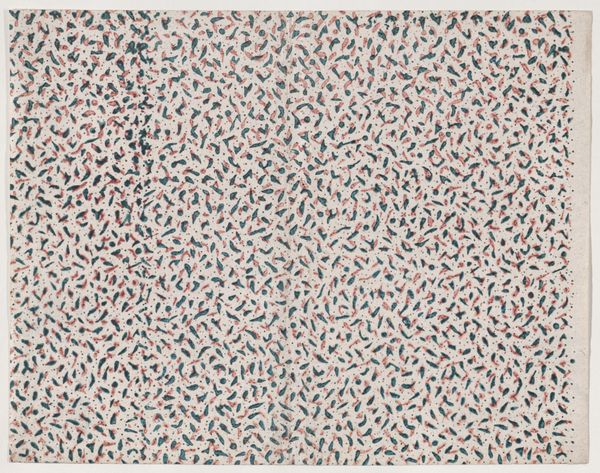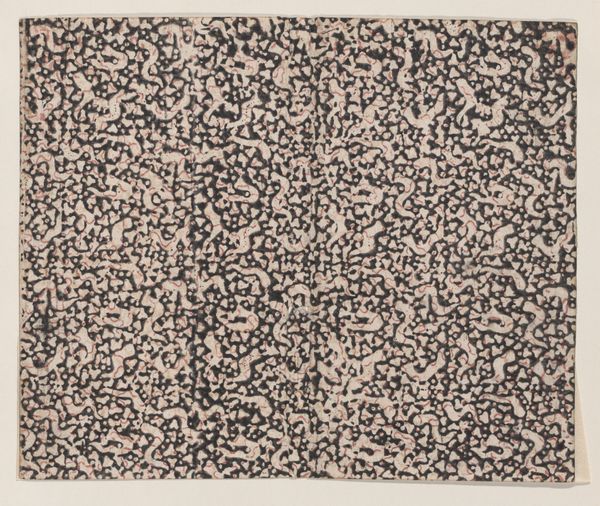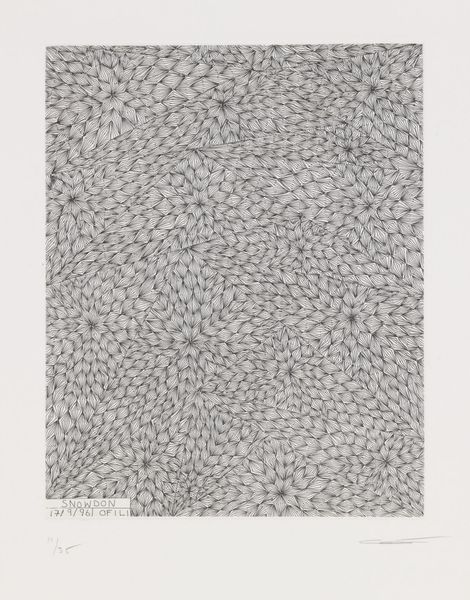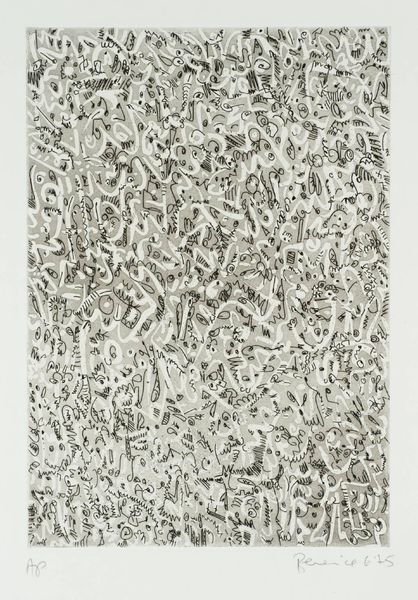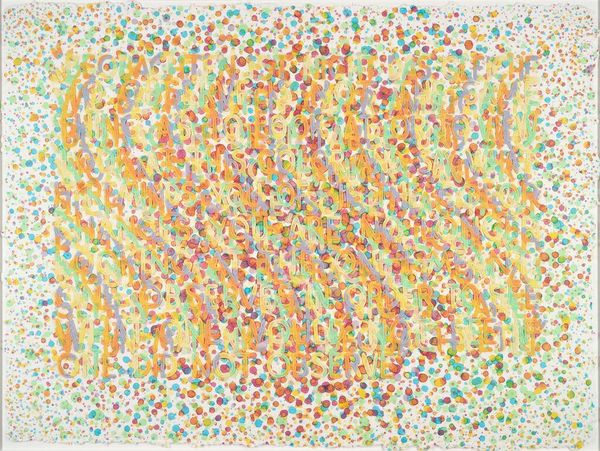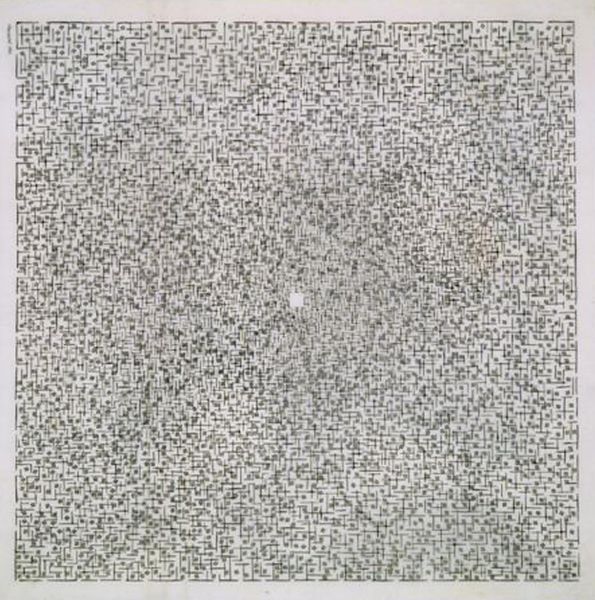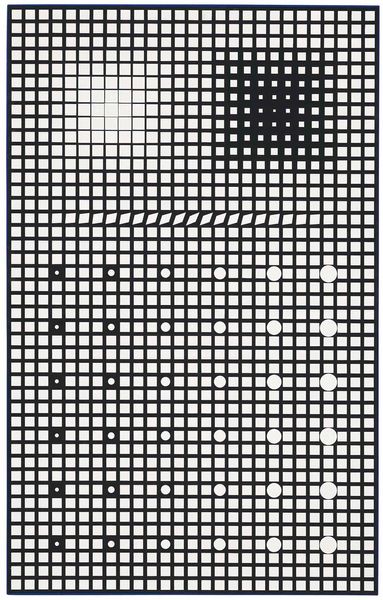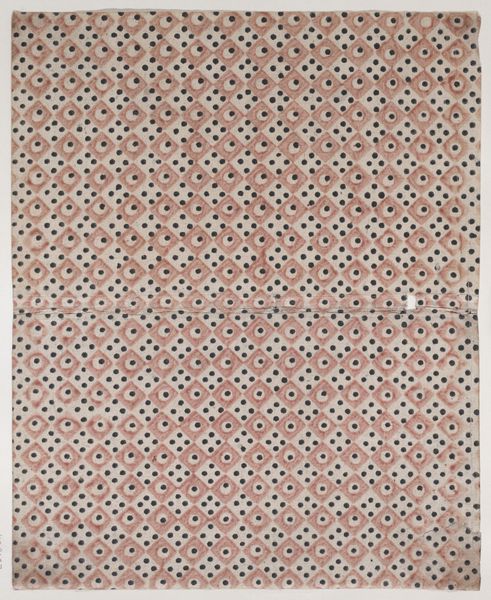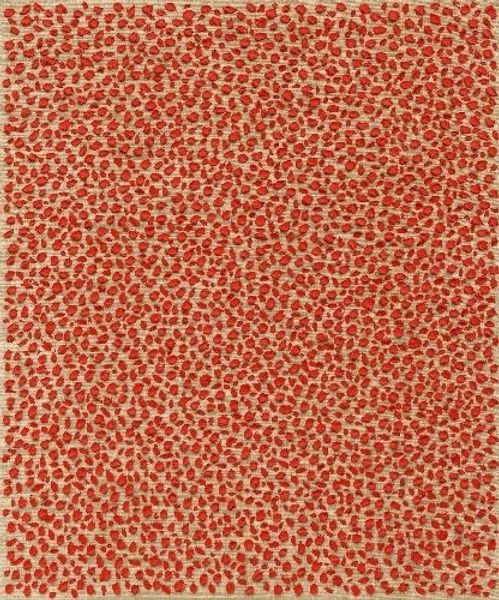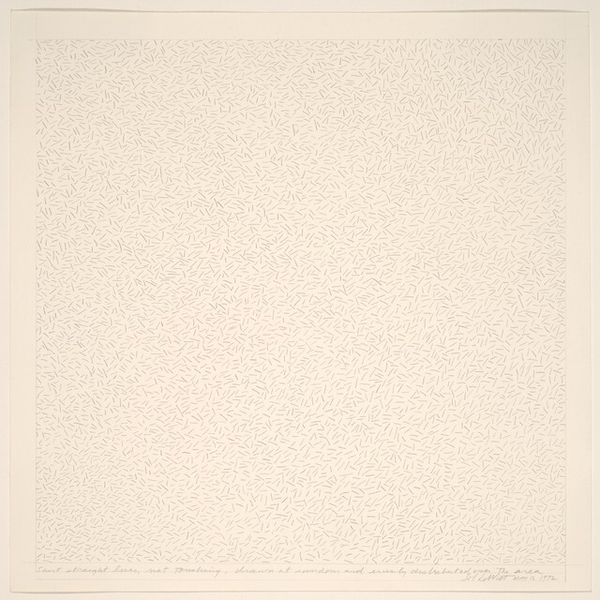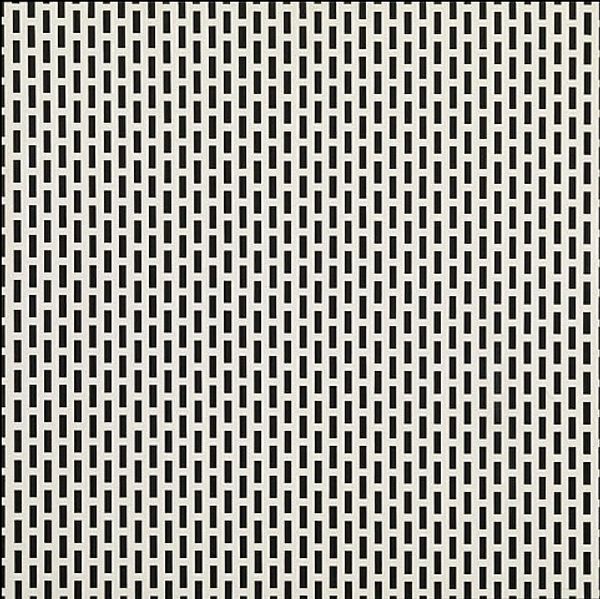
drawing, paper, ink
#
drawing
#
organic
#
paper
#
ink
#
line
Dimensions: sheet: 167.2 × 91.3 cm (65 13/16 × 35 15/16 in.)
Copyright: National Gallery of Art: CC0 1.0
Curator: Before us we have an untitled drawing by Christopher Wool, created in 1988. Editor: My initial impression is one of dense, almost overwhelming intricacy. It’s like a field of interconnected vines stretching across the surface, creating a visual tapestry that draws you in. Curator: It’s a perfect example of Wool’s exploration of pattern, materiality, and the space between art and decoration. He used what look like basic drawing materials—paper and what is presumably ink. What strikes me is the seemingly endless repetition. Considering that this work emerged amidst the Pattern and Decoration movement, it encourages us to look closely at our cultural environment. Editor: Exactly, the interplay of black lines against the white backdrop creates a dynamic push-and-pull. The repeated forms evoke a sense of natural growth. I would also say that line becomes texture. There are hints of biomorphism in its shape and composition. The mark making emphasizes structure and rhythm as integral components of Wool's strategy. Curator: Do you think its "organic" character can be seen as an attempt by Wool to address, and perhaps subvert, the then prevailing ideas around the supposed neutrality and autonomy of high art? Considering Wool's use of commonplace tools, the work can be framed as a commentary on mass production. How do these organic motifs challenge hierarchical divisions between “high art” and decorative crafts? Editor: Possibly. The drawing's strength lies in its ability to transform mundane imagery into a fascinating exploration of the limits of visual perception. But looking purely at it, I would say the beauty emerges through its intrinsic, aesthetic arrangement and the dynamics inherent within the lines themselves. Curator: I see it as how the aesthetic intersects with consumer culture. By repeating those patterns he encourages us to question value systems and challenge conventions. Editor: Yes. The lines do echo natural growth, the aesthetic rhythm draws my eye to all the elements, their combined impact really transforms and elevates something mundane into high art. Curator: Ultimately it’s that very tension, between the high and the low, the hand-drawn and the manufactured, that makes Wool’s drawing so compelling and important. Editor: For me, what resonates the most is how visual organization is brought about to instill new sensations—a powerful and lasting visual experience that stays with me long after.
Comments
No comments
Be the first to comment and join the conversation on the ultimate creative platform.
